(Mise à jour pour être en accord avec la nouvelle version de la source de la page) |
(Page créée avec « Congratulations, your wallet is now closed! Don't hesitate to adjust the size of the hole to make it easier to open and close. ») |
||
| (29 révisions intermédiaires par le même utilisateur non affichées) | |||
| Ligne 3 : | Ligne 3 : | ||
|Main_Picture_annotation={"version":"3.5.0","objects":[{"type":"image","version":"3.5.0","originX":"left","originY":"top","left":-2,"top":-144,"width":4284,"height":5712,"fill":"rgb(0,0,0)","stroke":null,"strokeWidth":0,"strokeDashArray":null,"strokeLineCap":"butt","strokeDashOffset":0,"strokeLineJoin":"miter","strokeMiterLimit":4,"scaleX":0.14,"scaleY":0.14,"angle":0,"flipX":false,"flipY":false,"opacity":1,"shadow":null,"visible":true,"clipTo":null,"backgroundColor":"","fillRule":"nonzero","paintFirst":"fill","globalCompositeOperation":"source-over","transformMatrix":null,"skewX":0,"skewY":0,"crossOrigin":"","cropX":0,"cropY":0,"src":"https://wiki.lowtechlab.org/images/8/82/Porte-monnaie_en_brique_24.jpg","filters":[]}],"height":449.6,"width":600} | |Main_Picture_annotation={"version":"3.5.0","objects":[{"type":"image","version":"3.5.0","originX":"left","originY":"top","left":-2,"top":-144,"width":4284,"height":5712,"fill":"rgb(0,0,0)","stroke":null,"strokeWidth":0,"strokeDashArray":null,"strokeLineCap":"butt","strokeDashOffset":0,"strokeLineJoin":"miter","strokeMiterLimit":4,"scaleX":0.14,"scaleY":0.14,"angle":0,"flipX":false,"flipY":false,"opacity":1,"shadow":null,"visible":true,"clipTo":null,"backgroundColor":"","fillRule":"nonzero","paintFirst":"fill","globalCompositeOperation":"source-over","transformMatrix":null,"skewX":0,"skewY":0,"crossOrigin":"","cropX":0,"cropY":0,"src":"https://wiki.lowtechlab.org/images/8/82/Porte-monnaie_en_brique_24.jpg","filters":[]}],"height":449.6,"width":600} | ||
|Licences=Attribution (CC BY) | |Licences=Attribution (CC BY) | ||
| − | |Description= | + | |Description=We'll show you how to turn a milk or juice carton into a practical wallet. |
| − | + | Not only will this give you a very useful wallet, but you'll also be using the carton that would otherwise have ended up in the bin. Turning useless waste into useful products is a key principle of low-tech. What's more, you get your own personal wallet! | |
|Area=Hygiene, Tools | |Area=Hygiene, Tools | ||
|Type=Tutorial | |Type=Tutorial | ||
| Ligne 15 : | Ligne 15 : | ||
}} | }} | ||
{{Introduction | {{Introduction | ||
| − | |Introduction= | + | |Introduction=Reuse and recycling have become essential practices for reducing our environmental impact. One creative way of doing this is to make everyday objects from recycled materials. Today, we're going to learn how to make a wallet from a juice or milk carton. This DIY project is not only environmentally friendly, but also practical and fun to make. Follow the detailed steps below to create your own unique wallet. |
}} | }} | ||
{{Materials | {{Materials | ||
|Step_Picture_00=Porte-monnaie_en_brique_1.jpg | |Step_Picture_00=Porte-monnaie_en_brique_1.jpg | ||
| − | |Material=-1 | + | |Material=-1 brick of milk or juice |
| − | |Tools=- 1 | + | |Tools=- 1 pair of scissors |
}} | }} | ||
{{Tuto Step | {{Tuto Step | ||
| − | |Step_Title= | + | |Step_Title=Preparation of the brick |
| − | |Step_Content=- | + | |Step_Content=- Rinse the inside thoroughly with water |
| − | - | + | - Dry the brick with a cloth |
| − | - | + | - Dry the inside of the brick |
}} | }} | ||
{{Tuto Step | {{Tuto Step | ||
| − | |Step_Title= | + | |Step_Title=Cutting the brick |
| − | |Step_Content= | + | |Step_Content=Cut off the top and bottom of the brick to make a cylinder. |
| − | + | Open the cylinder (of the brick) to obtain a flat sheet. | |
|Step_Picture_00=Porte-monnaie_en_brique_3.jpg | |Step_Picture_00=Porte-monnaie_en_brique_3.jpg | ||
|Step_Picture_01=Porte-monnaie_en_brique_2.jpg | |Step_Picture_01=Porte-monnaie_en_brique_2.jpg | ||
| Ligne 40 : | Ligne 40 : | ||
}} | }} | ||
{{Tuto Step | {{Tuto Step | ||
| − | |Step_Title= | + | |Step_Title=Fold marking |
| − | |Step_Content=- | + | |Step_Content=- Fold the brick at 2 equidistant points (as you would fold an A4 page before slipping it into an envelope) to obtain 3 identical lengths. |
| − | - | + | - Make sure the folds are well marked by pressing firmly on them. |
| − | - | + | - Fold each part in 2 so that there are 4 parts in each area (see photo 4). |
| − | - | + | - Now fold the whole cardboard in 3 so that only the bottom tabs stick out. Press down hard on the fold. (see photo 5) |
|Step_Picture_00=Porte-monnaie_en_brique_5.jpg | |Step_Picture_00=Porte-monnaie_en_brique_5.jpg | ||
|Step_Picture_01=Porte-monnaie_en_brique_6.jpg | |Step_Picture_01=Porte-monnaie_en_brique_6.jpg | ||
| Ligne 55 : | Ligne 55 : | ||
}} | }} | ||
{{Tuto Step | {{Tuto Step | ||
| − | |Step_Title= | + | |Step_Title=Cutting out the bottom section |
| − | |Step_Content= | + | |Step_Content=Cut out the 2 bottom side parts of the brick as shown in the photo. |
<br /> | <br /> | ||
| Ligne 66 : | Ligne 66 : | ||
}} | }} | ||
{{Tuto Step | {{Tuto Step | ||
| − | |Step_Title= | + | |Step_Title=Cutting out the last parts of the brick |
| − | |Step_Content= | + | |Step_Content=Cut out the two sides of the brick base as shown in the photo. |
|Step_Picture_00=Porte-monnaie_en_brique_13v.jpg | |Step_Picture_00=Porte-monnaie_en_brique_13v.jpg | ||
|Step_Picture_01=Porte-monnaie_en_brique_14.jpg | |Step_Picture_01=Porte-monnaie_en_brique_14.jpg | ||
| Ligne 73 : | Ligne 73 : | ||
}} | }} | ||
{{Tuto Step | {{Tuto Step | ||
| − | |Step_Title= | + | |Step_Title=Insert the cut part |
| − | |Step_Content= | + | |Step_Content=Insert the prepared piece into the top third of the brick. This creates a double inner pocket (the purse takes shape!) |
|Step_Picture_00=Porte-monnaie_en_brique_Plis1.jpg | |Step_Picture_00=Porte-monnaie_en_brique_Plis1.jpg | ||
|Step_Picture_01=Porte-monnaie_en_brique_Plis2.jpg | |Step_Picture_01=Porte-monnaie_en_brique_Plis2.jpg | ||
| Ligne 81 : | Ligne 81 : | ||
}} | }} | ||
{{Tuto Step | {{Tuto Step | ||
| − | |Step_Title= | + | |Step_Title=Fold the sides of the brick |
| − | |Step_Content= | + | |Step_Content=Fold the box on both sides, so that the centre line (in blue) folds inside the box and the two side lines (in red) fold outwards. (see photo 1) |
|Step_Picture_00=Porte-monnaie_en_brique_12v.jpg | |Step_Picture_00=Porte-monnaie_en_brique_12v.jpg | ||
|Step_Picture_01=Porte-monnaie_en_brique_16.jpg | |Step_Picture_01=Porte-monnaie_en_brique_16.jpg | ||
}} | }} | ||
{{Tuto Step | {{Tuto Step | ||
| − | |Step_Title= | + | |Step_Title=Make an impression on the inside of the flap |
| − | |Step_Content= | + | |Step_Content=Remove the cap from the carton, fold back the lid and press the carton against the plastic closure to create a round impression inside the carton. |
}} | }} | ||
{{Tuto Step | {{Tuto Step | ||
| − | |Step_Title= | + | |Step_Title=Make a hole in the wallet closure |
| − | |Step_Content= | + | |Step_Content=Use a scissor or cutter to make a hole through which the brick plug can protrude. |
|Step_Picture_00=Porte-monnaie_en_brique_20.jpg | |Step_Picture_00=Porte-monnaie_en_brique_20.jpg | ||
|Step_Picture_01=Porte-monnaie_en_brique_21.jpg | |Step_Picture_01=Porte-monnaie_en_brique_21.jpg | ||
}} | }} | ||
{{Tuto Step | {{Tuto Step | ||
| − | |Step_Title= | + | |Step_Title=Closing the wallet |
| − | |Step_Content= | + | |Step_Content=Congratulations, your wallet is now closed! Don't hesitate to adjust the size of the hole to make it easier to open and close. |
|Step_Picture_00=Porte-monnaie_en_brique_23.jpg | |Step_Picture_00=Porte-monnaie_en_brique_23.jpg | ||
|Step_Picture_01=Porte-monnaie_en_brique_25.jpg | |Step_Picture_01=Porte-monnaie_en_brique_25.jpg | ||
Version actuelle datée du 23 juillet 2024 à 09:00
Description
We'll show you how to turn a milk or juice carton into a practical wallet. Not only will this give you a very useful wallet, but you'll also be using the carton that would otherwise have ended up in the bin. Turning useless waste into useful products is a key principle of low-tech. What's more, you get your own personal wallet!
Sommaire
Sommaire
- 1 Description
- 2 Sommaire
- 3 Introduction
- 4 Étape 1 - Preparation of the brick
- 5 Étape 2 - Cutting the brick
- 6 Étape 3 - Fold marking
- 7 Étape 4 - Cutting out the bottom section
- 8 Étape 5 - Cutting out the last parts of the brick
- 9 Étape 6 - Insert the cut part
- 10 Étape 7 - Fold the sides of the brick
- 11 Étape 8 - Make an impression on the inside of the flap
- 12 Étape 9 - Make a hole in the wallet closure
- 13 Étape 10 - Closing the wallet
- 14 Commentaires
Introduction
Étape 1 - Preparation of the brick
- Rinse the inside thoroughly with water
- Dry the brick with a cloth
- Dry the inside of the brick
Étape 2 - Cutting the brick
Cut off the top and bottom of the brick to make a cylinder.
Open the cylinder (of the brick) to obtain a flat sheet.
Étape 3 - Fold marking
- Fold the brick at 2 equidistant points (as you would fold an A4 page before slipping it into an envelope) to obtain 3 identical lengths.
- Make sure the folds are well marked by pressing firmly on them.
- Fold each part in 2 so that there are 4 parts in each area (see photo 4).
- Now fold the whole cardboard in 3 so that only the bottom tabs stick out. Press down hard on the fold. (see photo 5)
Étape 4 - Cutting out the bottom section
Cut out the 2 bottom side parts of the brick as shown in the photo.
Étape 5 - Cutting out the last parts of the brick
Cut out the two sides of the brick base as shown in the photo.
Étape 6 - Insert the cut part
Insert the prepared piece into the top third of the brick. This creates a double inner pocket (the purse takes shape!)
Étape 7 - Fold the sides of the brick
Fold the box on both sides, so that the centre line (in blue) folds inside the box and the two side lines (in red) fold outwards. (see photo 1)
Étape 8 - Make an impression on the inside of the flap
Remove the cap from the carton, fold back the lid and press the carton against the plastic closure to create a round impression inside the carton.
Étape 9 - Make a hole in the wallet closure
Use a scissor or cutter to make a hole through which the brick plug can protrude.
Étape 10 - Closing the wallet
Congratulations, your wallet is now closed! Don't hesitate to adjust the size of the hole to make it easier to open and close.
Draft
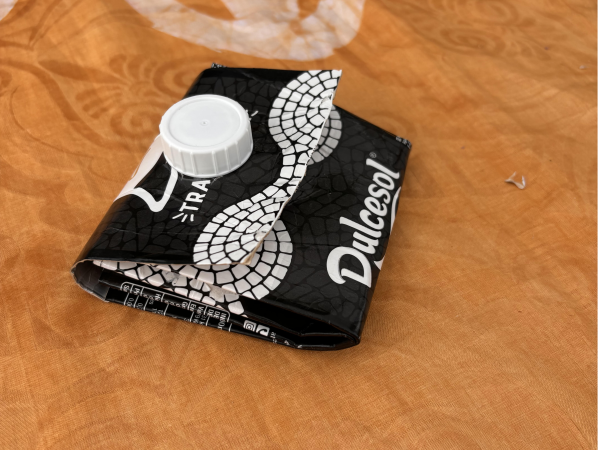
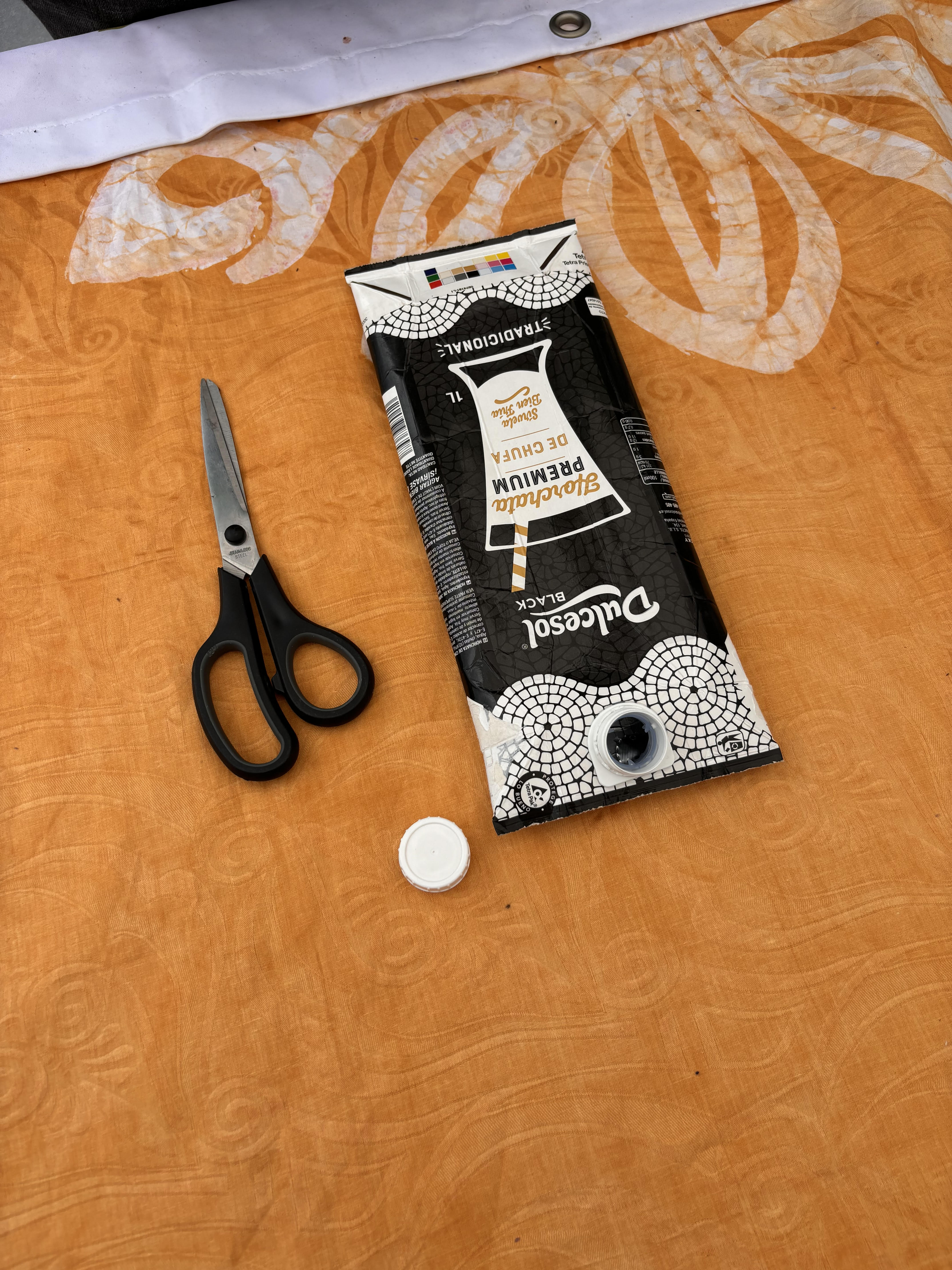
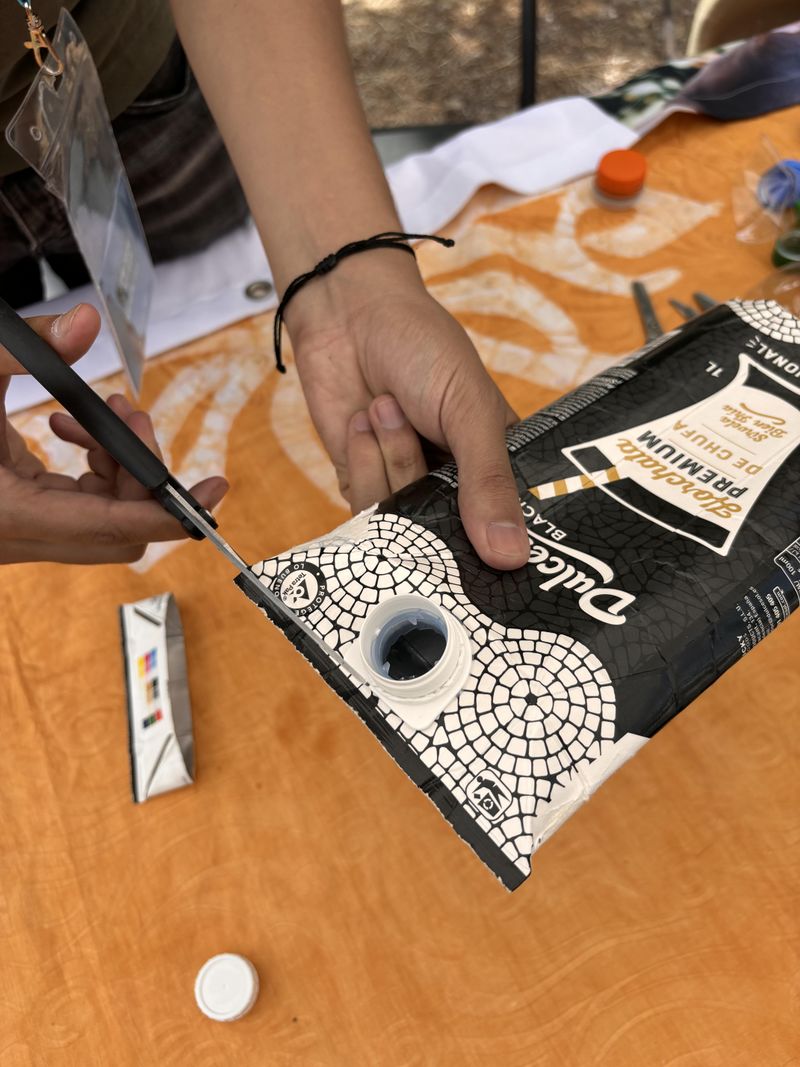
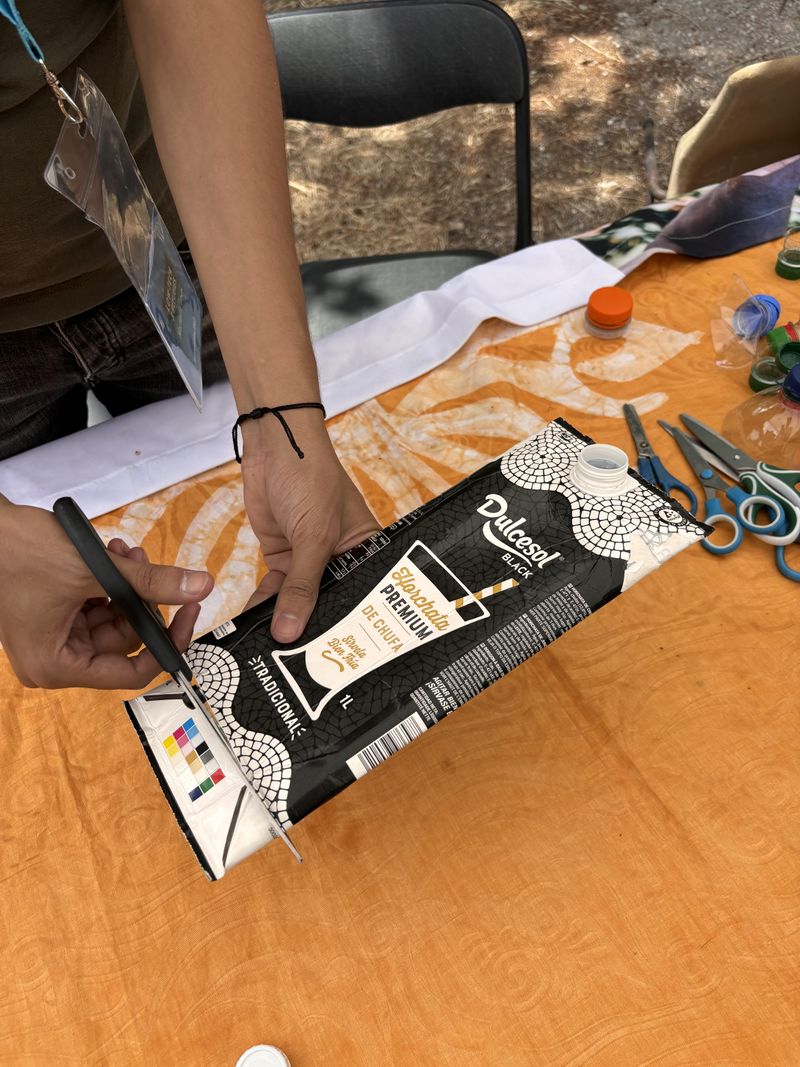
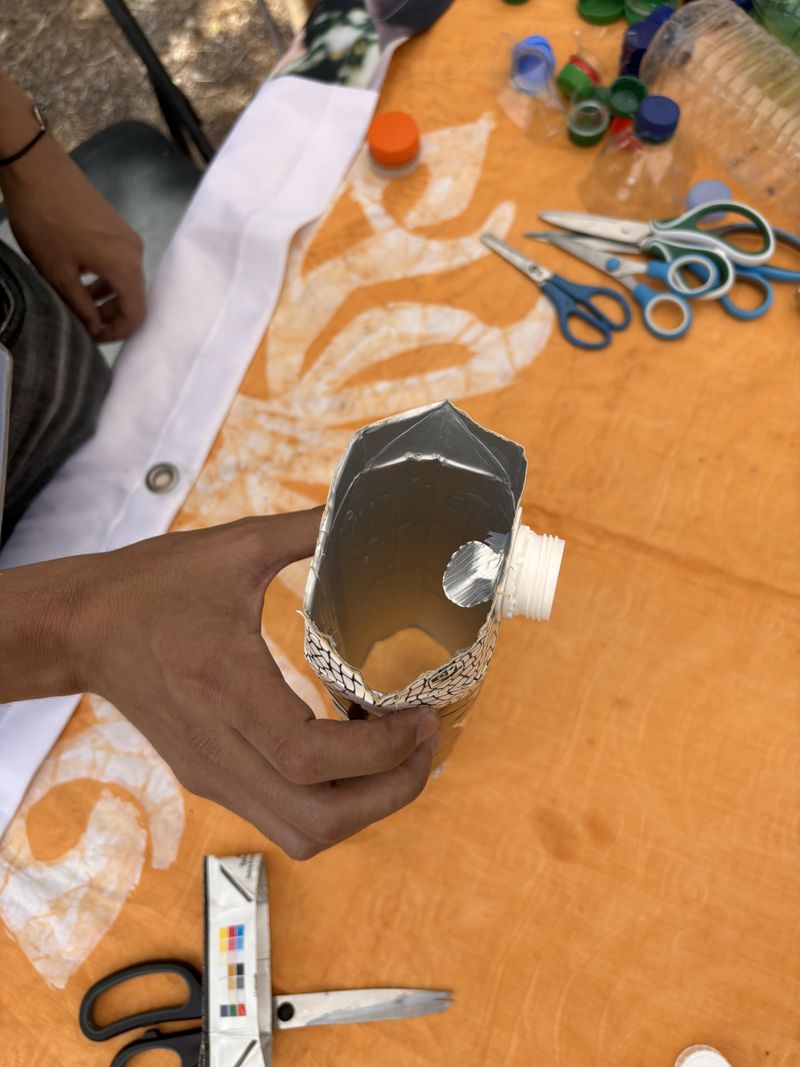
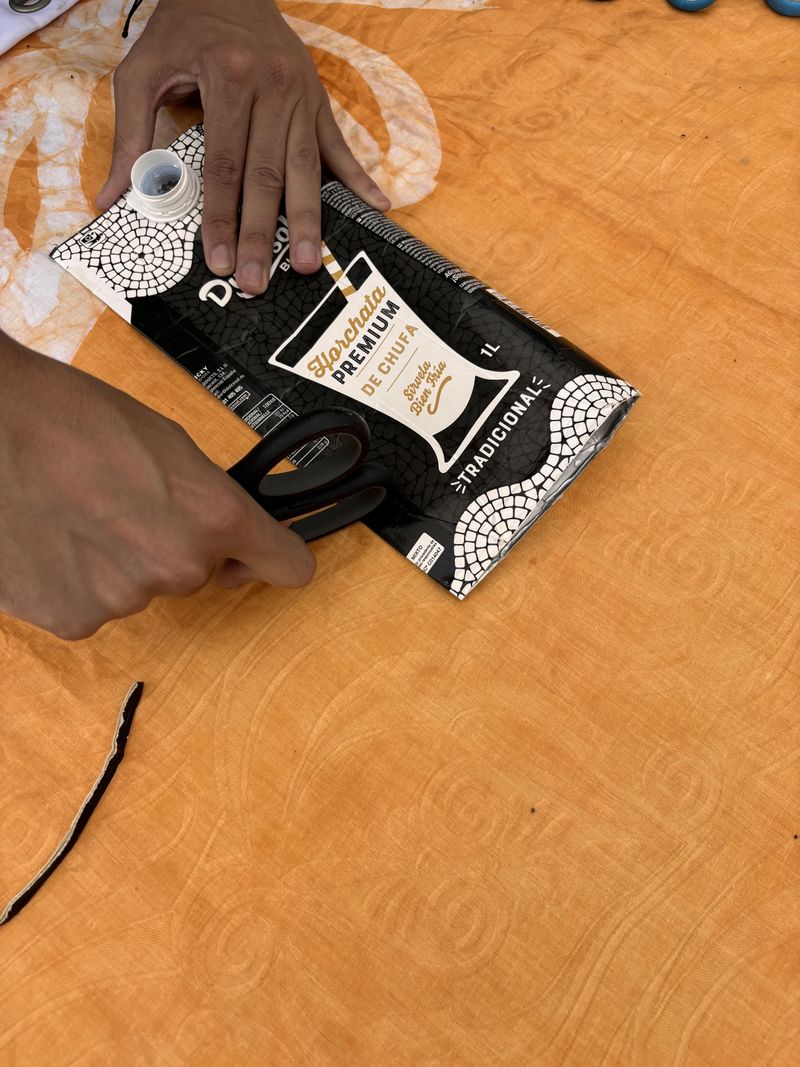
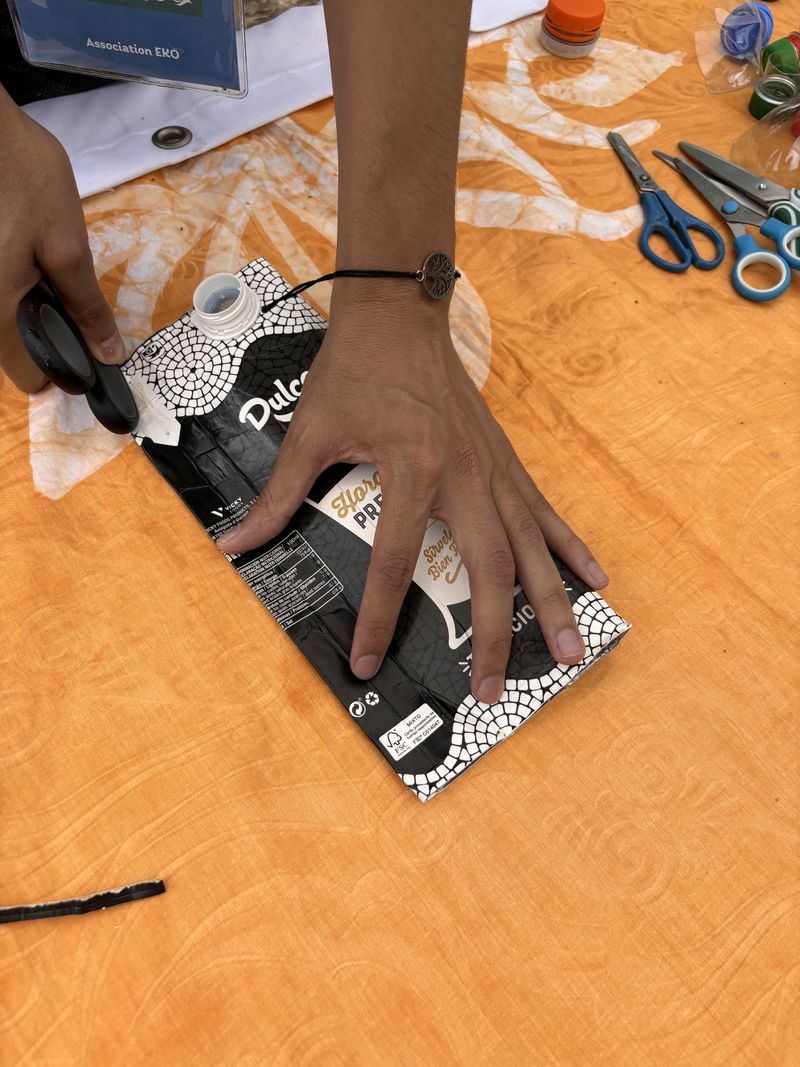
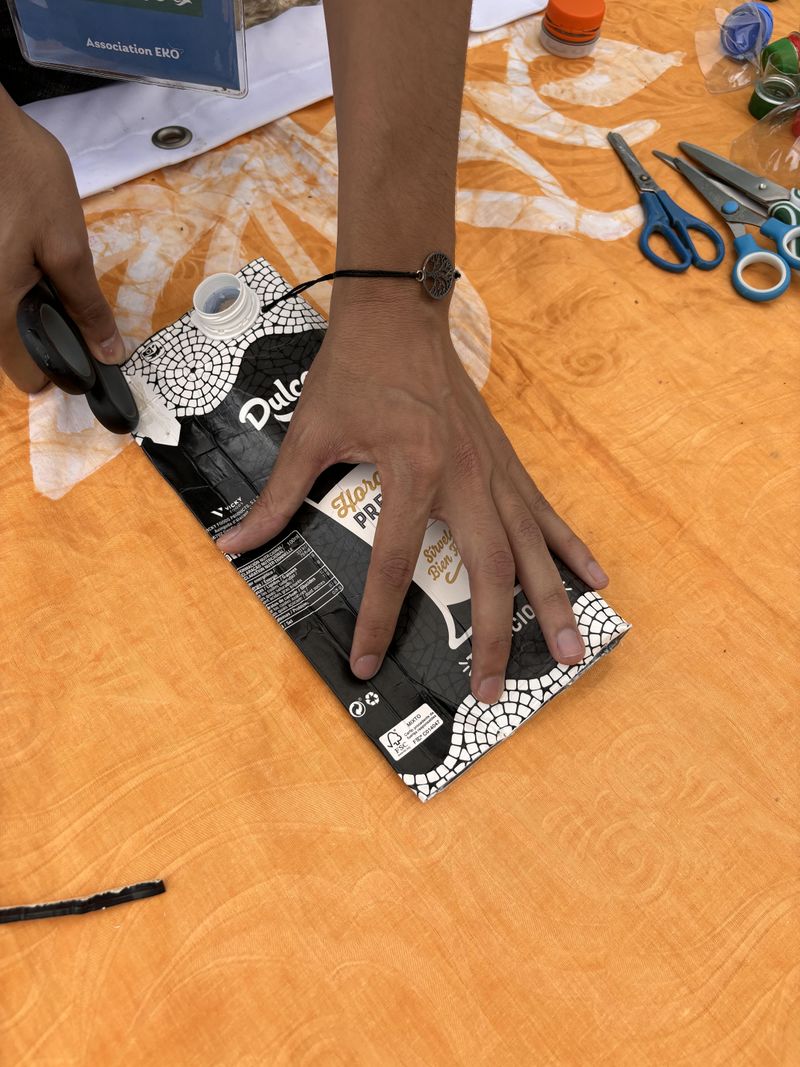
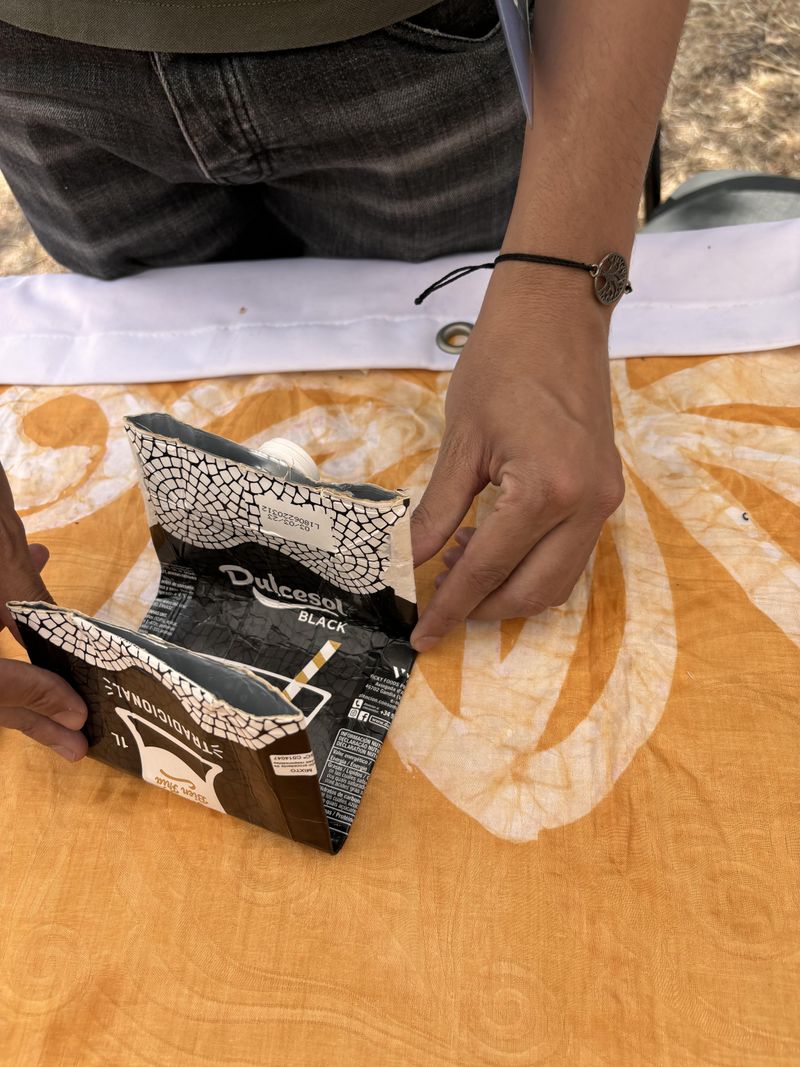
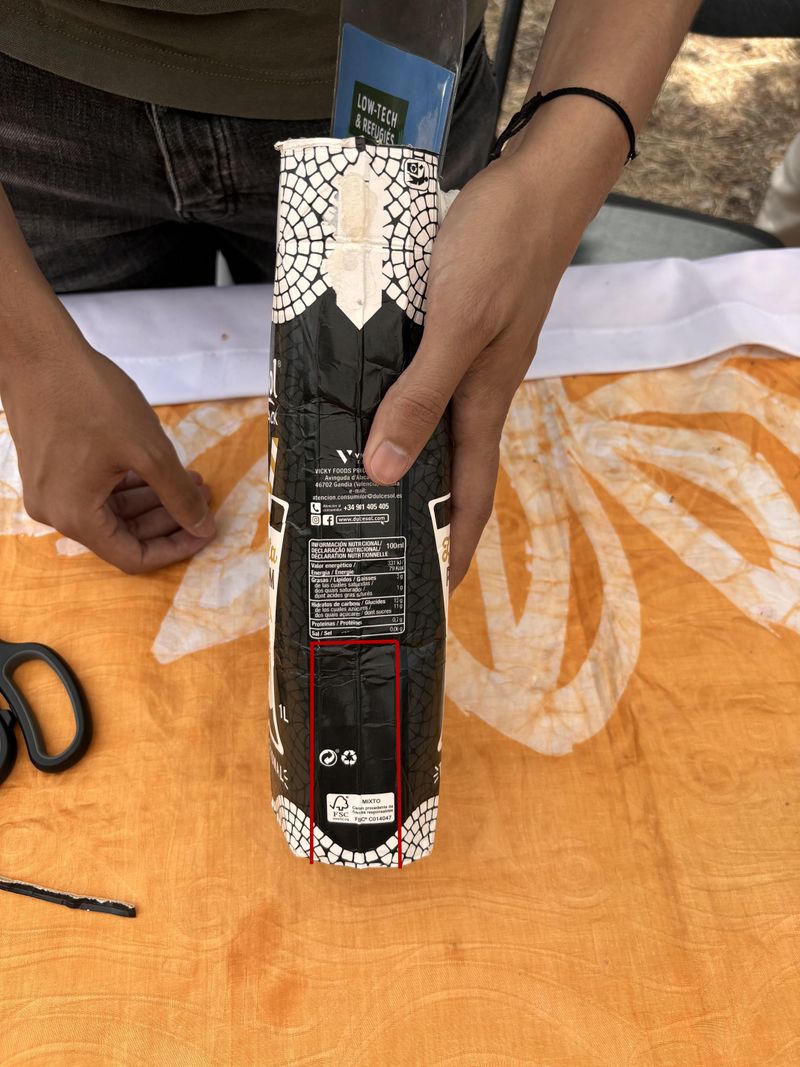
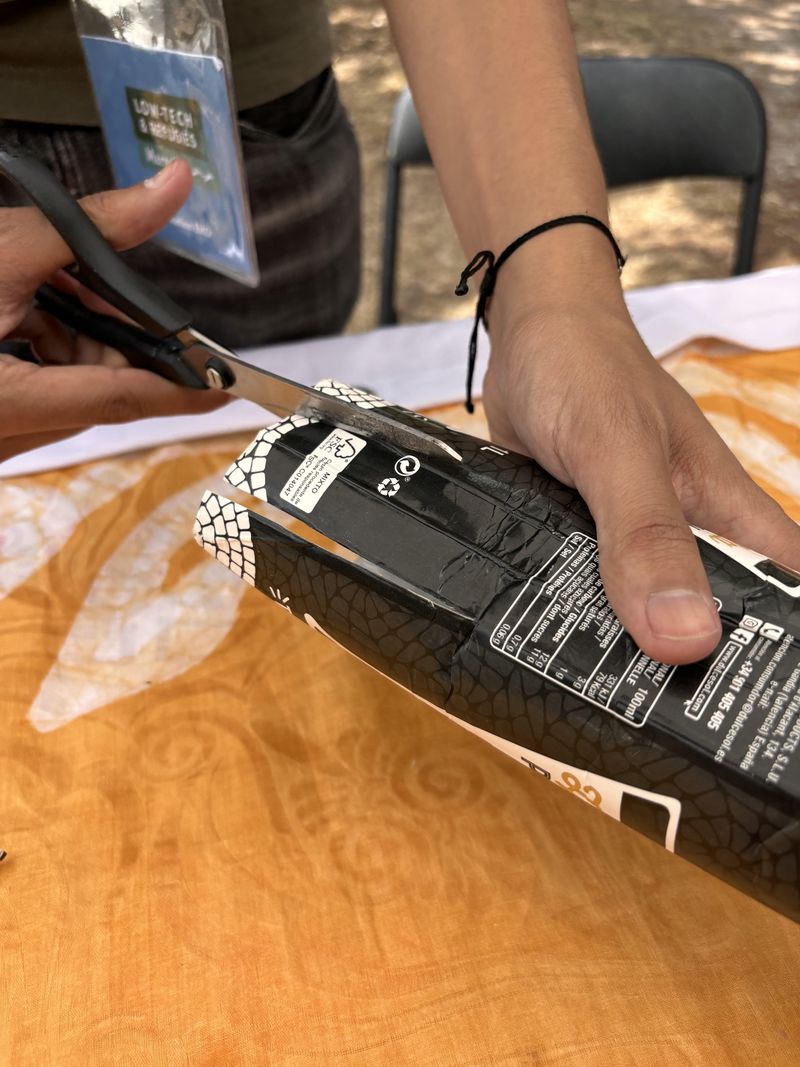
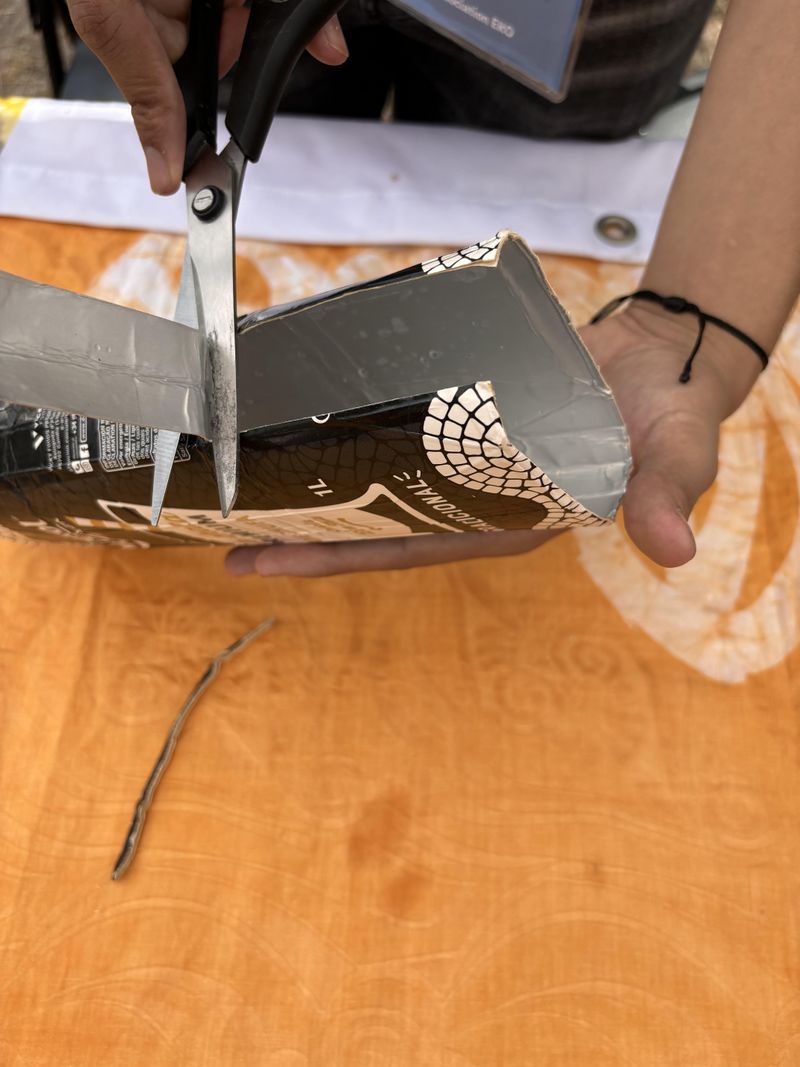
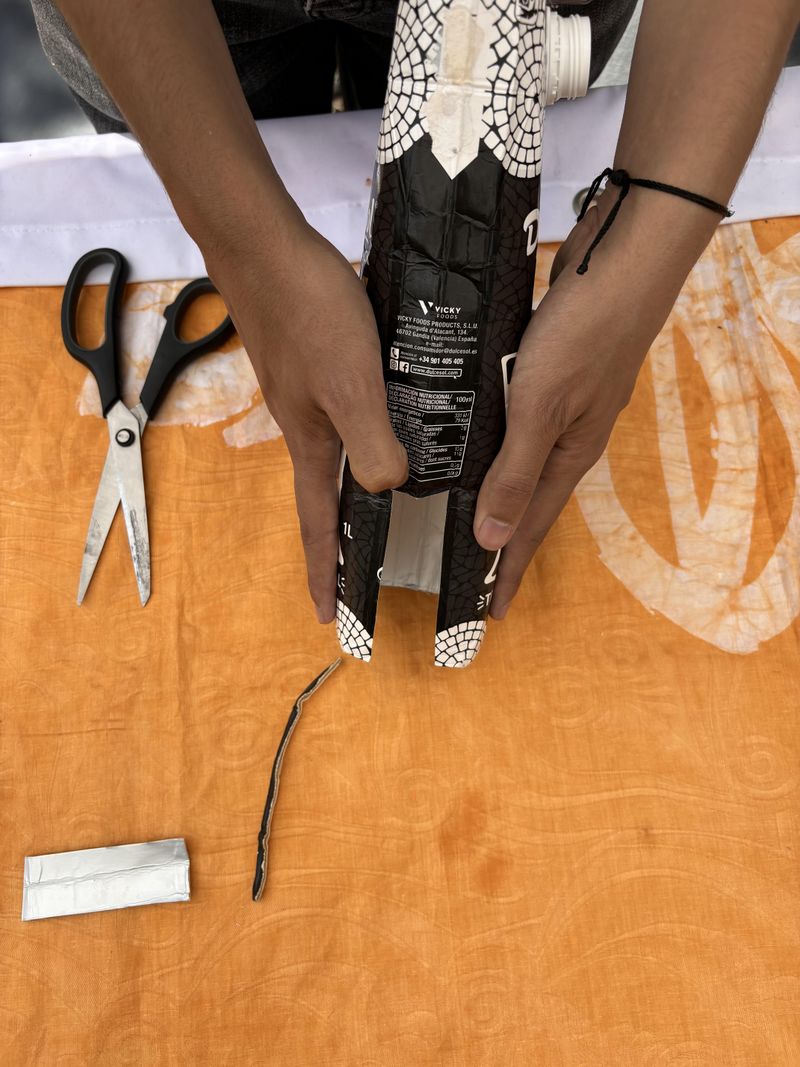
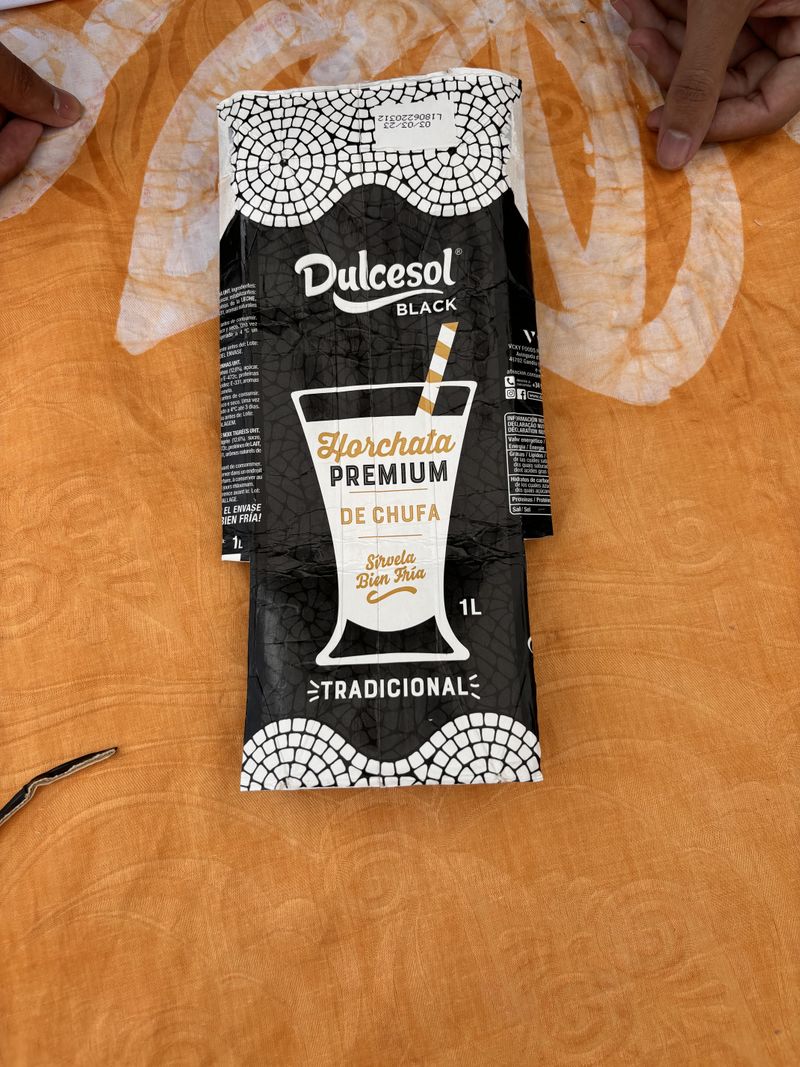

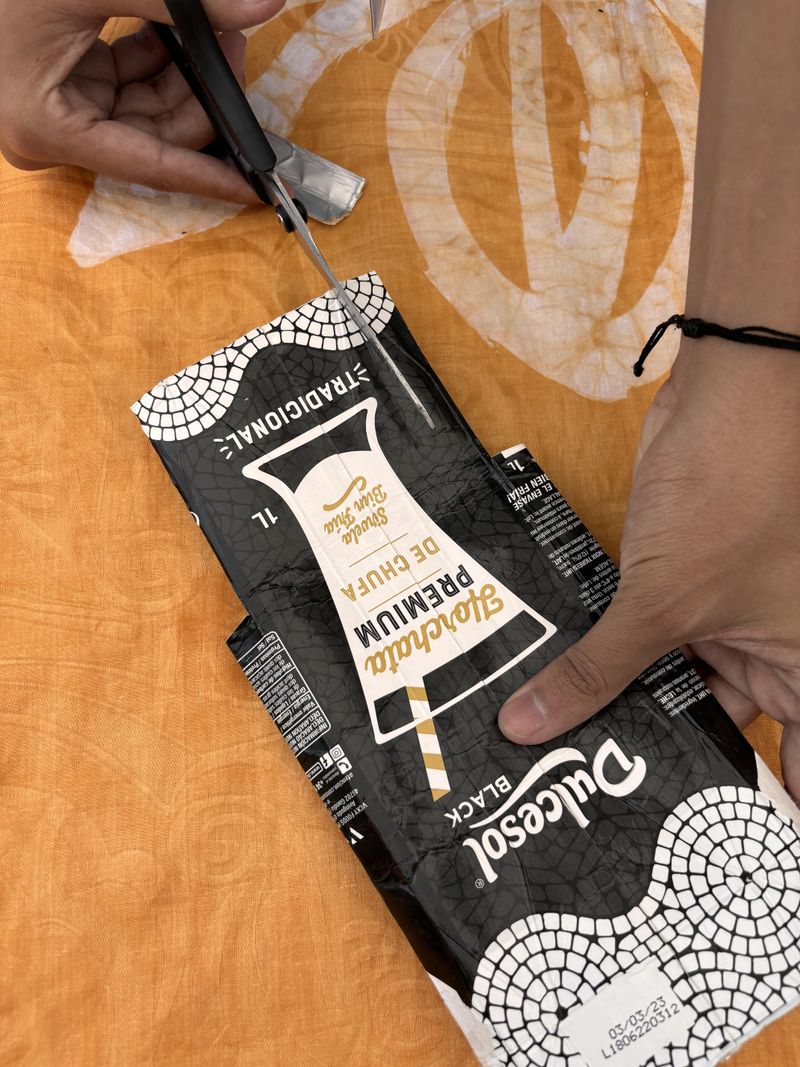
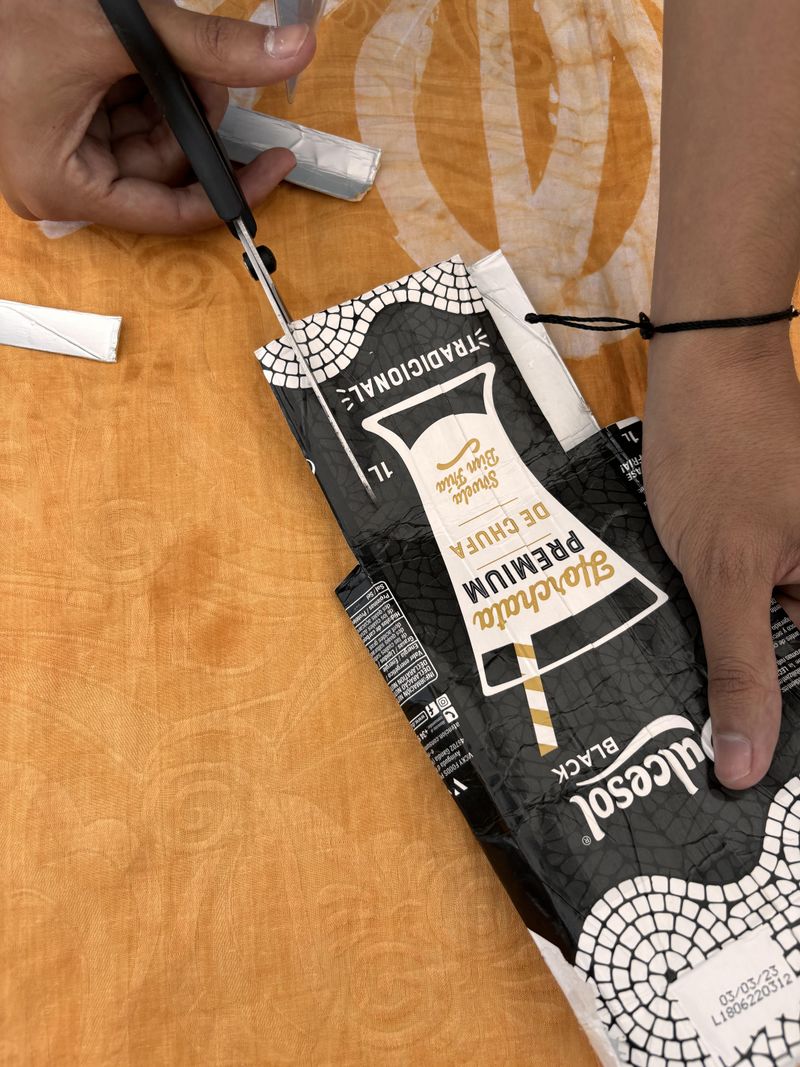
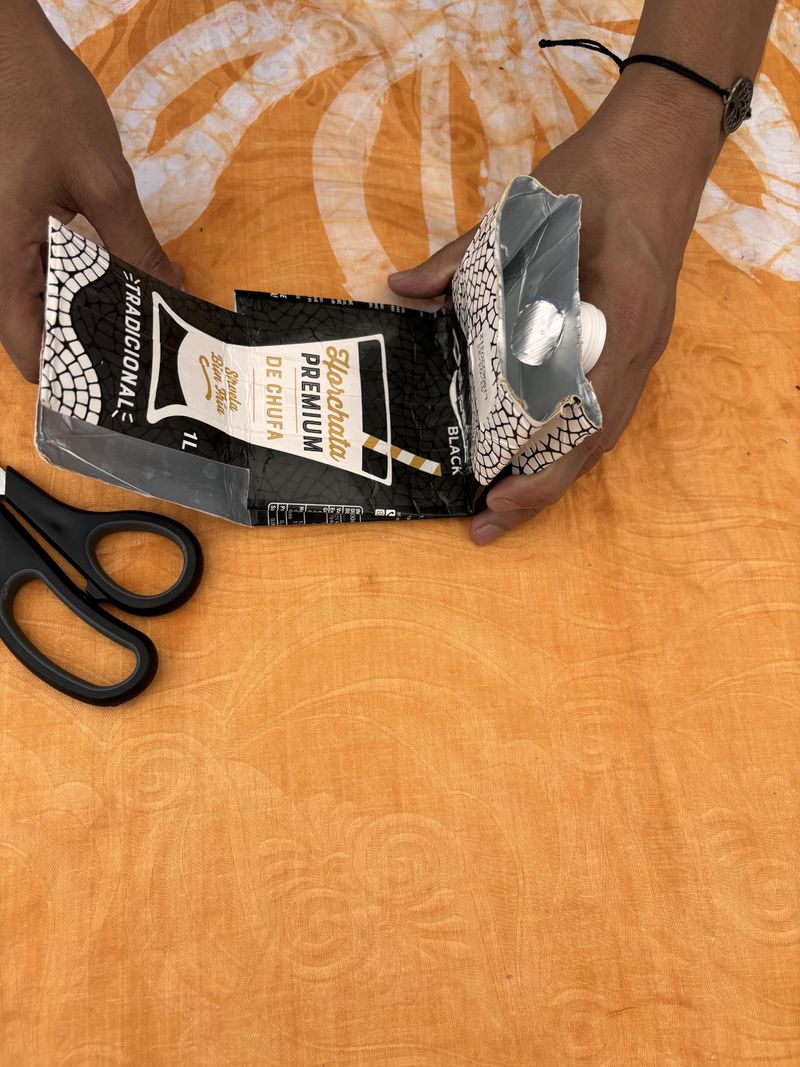
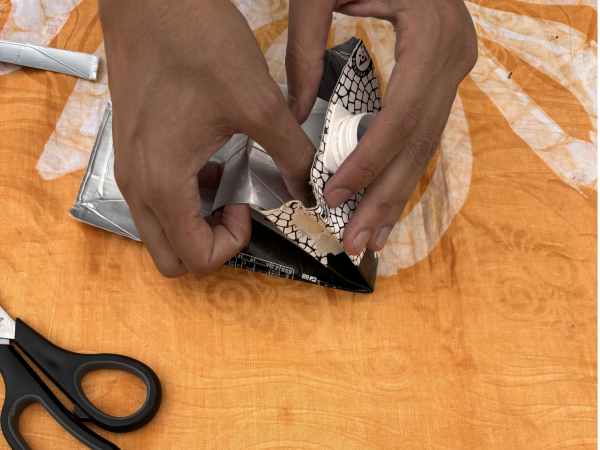
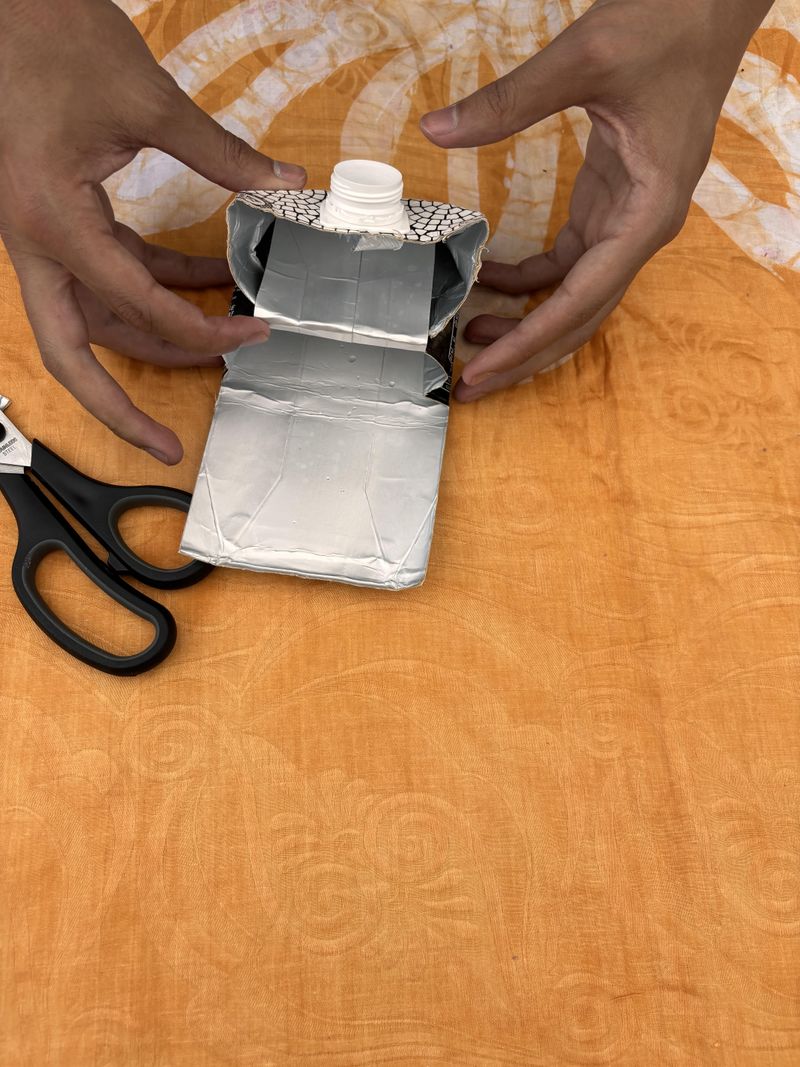
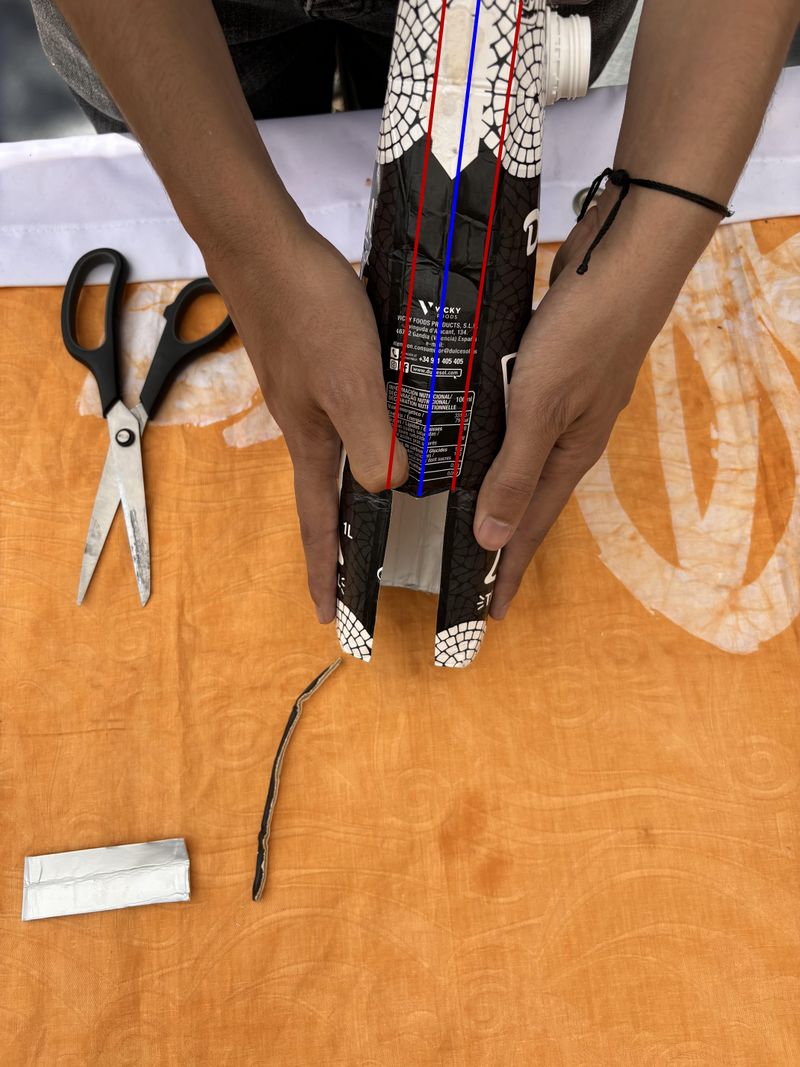
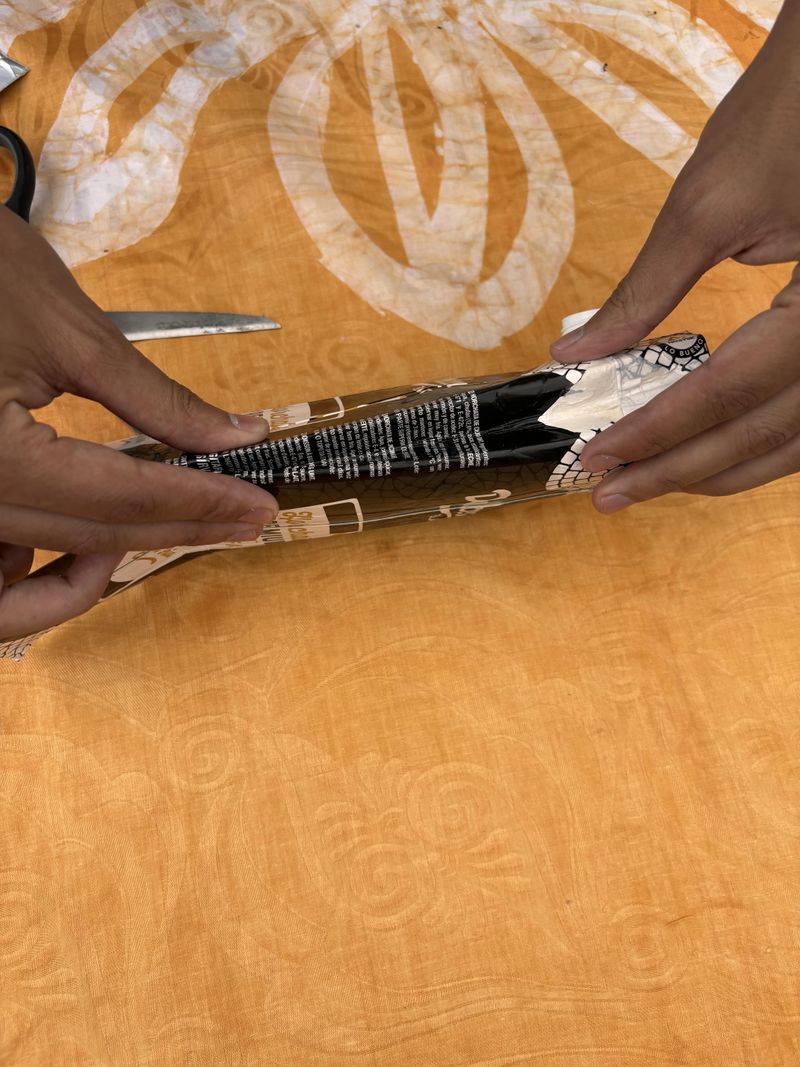
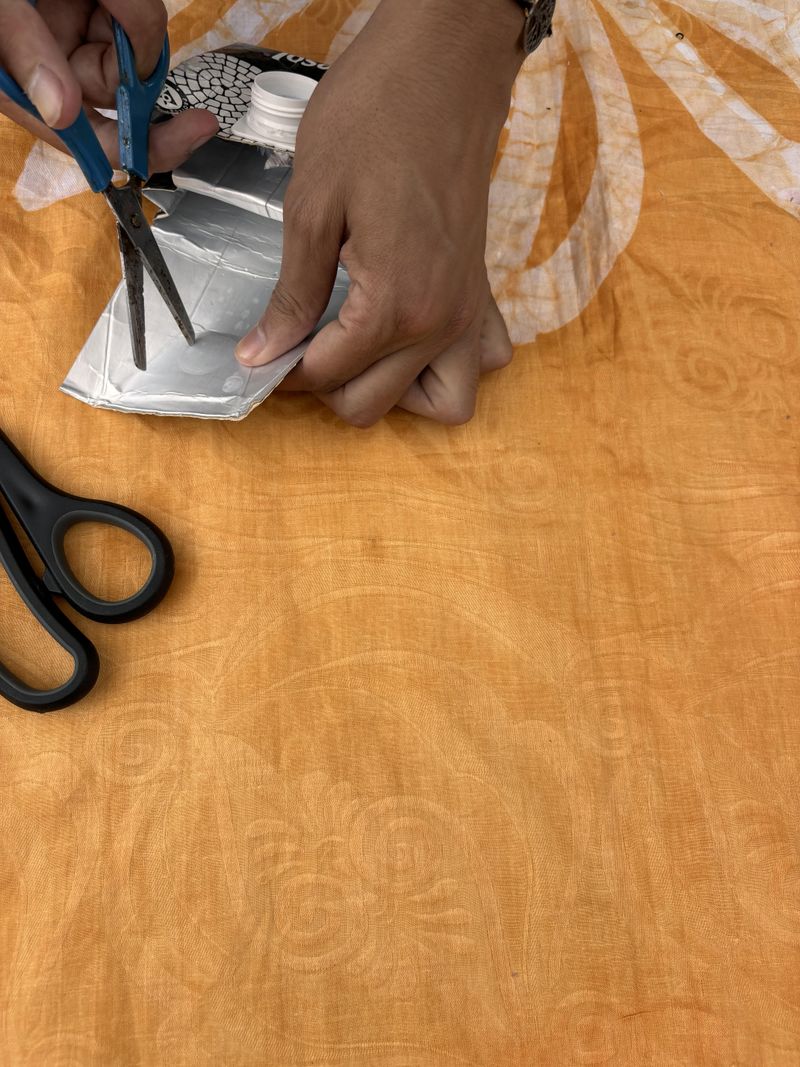
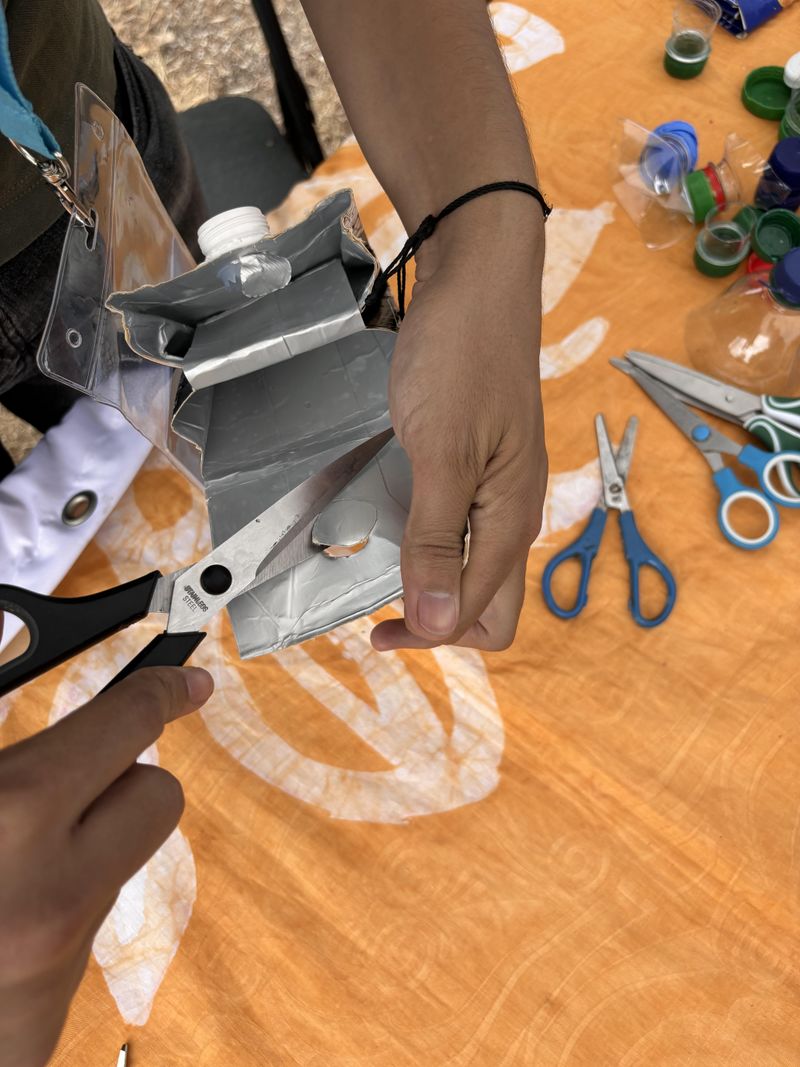
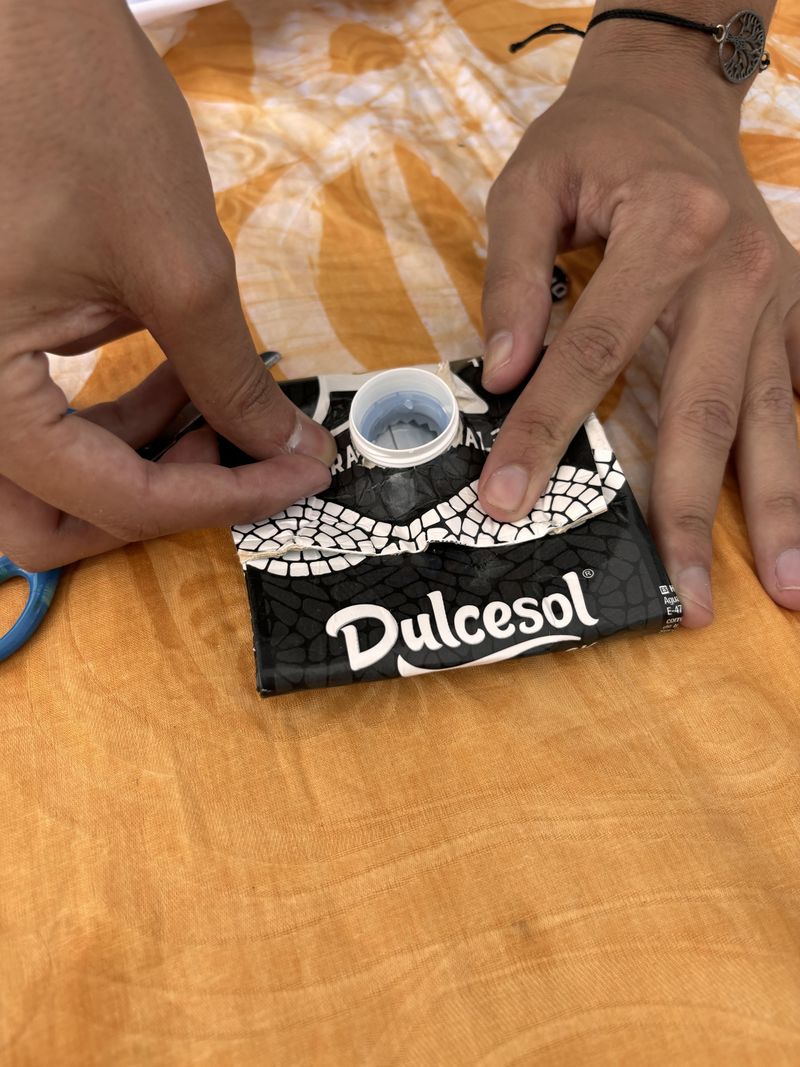
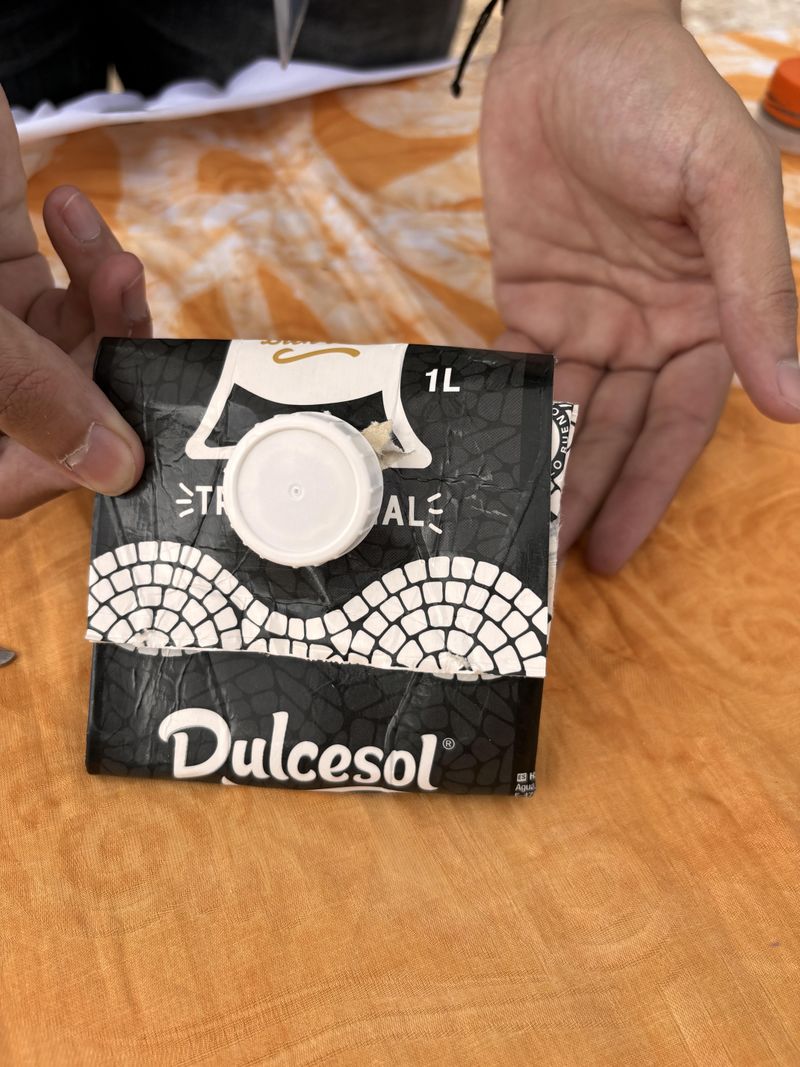
 Français
Français English
English Deutsch
Deutsch Español
Español Italiano
Italiano Português
Português